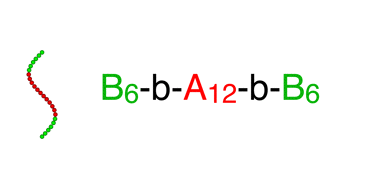Molecular dynamics simulations and PRISM theory study of solutions of nanoparticles and triblock copolymers with solvophobic end blocks†
Abstract
Hybrid materials composed of inorganic nanoparticles (NPs) and amphiphilic block copolymers (BCPs) combine desirable properties of NPs with the rich phase behavior of BCPs, making them attractive for use in biomaterials, responsive materials for sensing, active materials in robotics, etc. Specifically, triblock BCPs (e.g. BAB) with solvophobic end (B) blocks have been known to form micelle dispersions at low concentrations and gels at higher concentrations, making them a useful class of soft materials for a variety of applications that harness these solution structures of BAB–BCPs. In this work, we present a comprehensive study of the impact of NPs on the assembly of BAB–BCPs as a function of solvophobicity, BCP composition and NP affinity to either or both block(s) of BAB–BCP using a combination of coarse-grained molecular dynamics (MD) simulations and PRISM theory. The reason we use this dual theory-simulation approach is because PRISM theory provides structure and thermodynamic information for a given BCP–NP solution much faster than MD simulations, but PRISM theory converges to a numerical solution only for conditions where the solution is still disordered. So, we use PRISM theory to screen BAB–BCP solutions at low solvophobicity where the solution is still disordered, and identify signatures of gel formation and micro- and macro-phase separation depending on BCP composition, concentration, and NP affinity. Then using MD simulations, with increasing solvophobicity as the system orders, we quantify and visualize the shape and size of assembled cores in the ordered morphology, the conformations adopted by the A blocks and B blocks with and without NPs, the amount of NP uptake and the spatial arrangement of the NPs in the assembled structure. This paper demonstrates how one could optimally use both PRISM theory and MD simulations in a synergistic manner to screen a large materials design space for polymers and nanoparticle systems.

- This article is part of the themed collection: Machine Learning and Data Science in Materials Design


 Please wait while we load your content...
Please wait while we load your content...